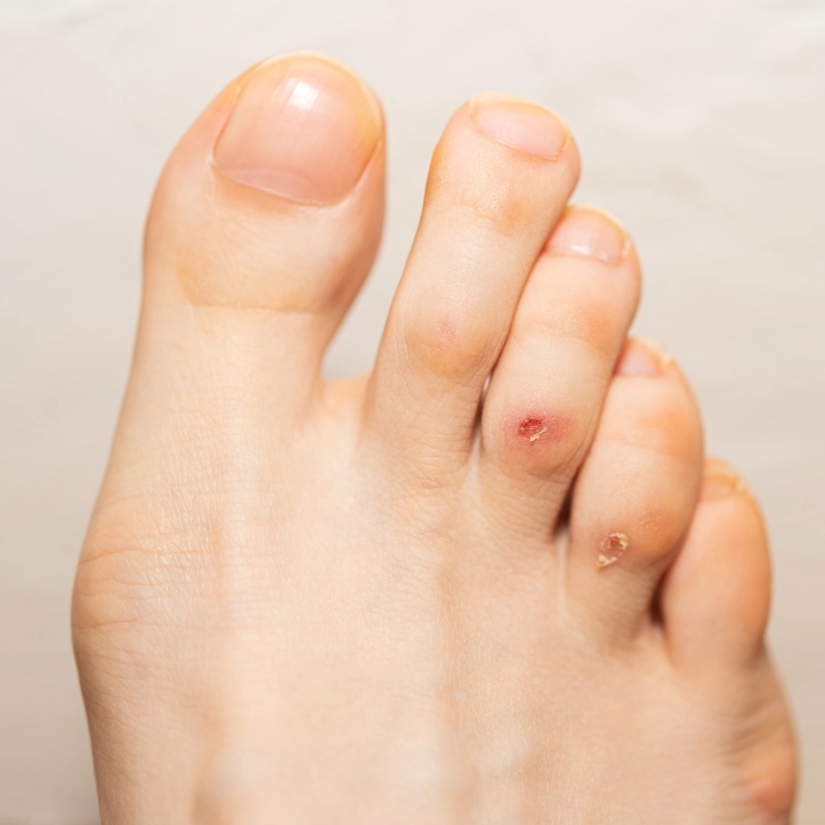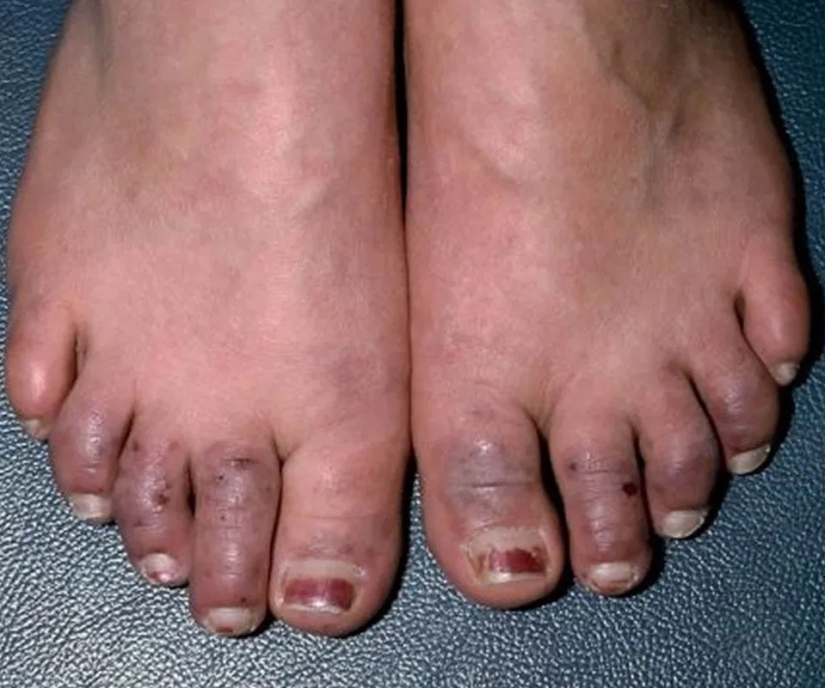How the feet display the state of health — 8 signals about serious diseases
Categories: Health and Medicine | Society | World
By Pictolic https://pictolic.com/article/how-the-feet-display-the-state-of-health-8-signals-about-serious-diseases.htmlThe coronavirus pandemic has exhausted humanity both physically and mentally. After the lockdown, many faced back pain, overweight problems, anxiety and depression ... the list of complaints can be continued for a long time. Among other things, experts told about the "quarantine feet" syndrome caused by months of walking in slippers, flip-flops or barefoot. At the same time, the ligaments stretch without the necessary support, and wearing shoes with heels subsequently becomes painful.

Our feet reflect the general state of health, so you need to pay attention to them more often. We have collected signs that may indicate serious diseases. By paying attention to these signals, you can prevent the development of diseases in time.
"Quarantine feet" are not the only health problem associated with legs. Doctors advise you to pay more attention to the soles and toes in order to notice the manifestations of arthritis, diabetes and cardiovascular diseases in time.
Here are the changes taking place with the feet that should alert you and encourage you to make an appointment with a specialist.

Bumps are hard bony outgrowths on the sides of the feet on the thumbs. They appear due to excessive shoe pressure on the joints. It often happens that such outgrowths are associated with genetics, but they can also be signs of arthritis or a consequence of wearing unsuitable shoes.
Comfortable shoes with low heels and soft soles will help to reduce the bones on the fingers. To relieve pressure on the joints, you can use special inserts for shoes.

Many people complained of heel pain during the lockdown. It's all the fault of wearing slippers for a long time and walking barefoot. People who switched to remote mode of work forgot about shoes and office shoes for a long time. This led to manifestations of plantar fasciitis, in which the heels and recesses in the foot area hurt.
The pain syndrome is based on inflammation of the plantar fascia — a layer of rigid connective tissue that, like a cable, connects the calcaneus with the metatarsal bones and supports the longitudinal arch of the foot. Most often, the problem occurs in people aged 40 to 60 years, but recently the disease has begun to appear in young people.
To prevent and alleviate unpleasant symptoms, wear high-quality slippers at home with the support of a notch on the foot. At the first painful manifestations, you need to urgently contact an orthopedist.

Usually the skin cracks from lack of moisture. This happens with age, but constant walking barefoot can make the skin even drier. We spend a lot of money on high-quality face and body creams, but we often forget about the legs. Use a nourishing foot cream, but do not apply it between your toes to avoid a fungal infection.

The legs often swell during the heat or during a sedentary lifestyle. However, in some cases, edema can be a sign of serious diseases.
To relieve swelling, do exercises to accelerate blood flow to the feet. Stretch your legs out in front of you and try to draw circles in the air with your thumbs. Perform circular movements 10 times clockwise and 10 times in the opposite direction.
If the unpleasant symptoms do not go away, consult a doctor, because swelling may indicate diabetes or cardiovascular diseases. When only one leg swells, while it hurts and becomes hot, this may be a sign of thrombosis.

A callus is a thick yellowish lump formed from dead skin as a result of excessive pressure or friction. Calluses are small outgrowths of hard skin. They usually occur to protect the skin from pressure.
Calluses and calluses indicate that you are wearing the wrong shoes, but they can be a sign of obesity and type 2 diabetes. To prevent calluses, give up tight shoes and regularly polish places with roughened skin with a pumice stone or a foot file.

When visiting swimming pools, gyms, spas and locker rooms, it's easy to pick up a fungal infection, and it takes quite a long time to be treated. Cracked skin on the feet may indicate the development of various diseases. Frequent wearing of warm slippers aggravates the spread of the fungus, and it eventually passes to the nails.
Fungal infections can also be a sign of diabetes. At the first manifestations of the disease, you need to consult a doctor and start treatment as soon as possible.

Doctors declare a new consequence of the coronavirus — the so-called "covid finger", which manifests itself in people who have had the disease. Chills are felt in the feet, they are covered with a red rash that spreads to the fingers. Usually such signs appear after the first symptoms of Covid-19 — cough and fever. This is due to the fact that the virus attacks the vascular system and damages the skin.

If you have constantly cold feet, this may be a sign of poor blood flow. In addition, there is a disease called Raynaud's syndrome, which slows down blood circulation. In some people, this is manifested by blue toes.
Pay more attention to your feet. Even minor problems can indicate serious diseases, so if the above signs appear, be sure to consult a doctor.
The condition of the nails can also tell a lot about problems in the body. Here are 10 signs of serious diseases that can be determined by them.
Recent articles

There are many stories of children disappearing without a trace. Much less often, they appear out of nowhere, as happened on May ...

Kerem Cigerci is a 19-year-old digital artist from Istanbul. Despite his young age, he is not a novice in his field. Kerem has been ...

In the early Middle Ages, there was a special method of justice known as the Court of God. It was usually used when ordinary ...